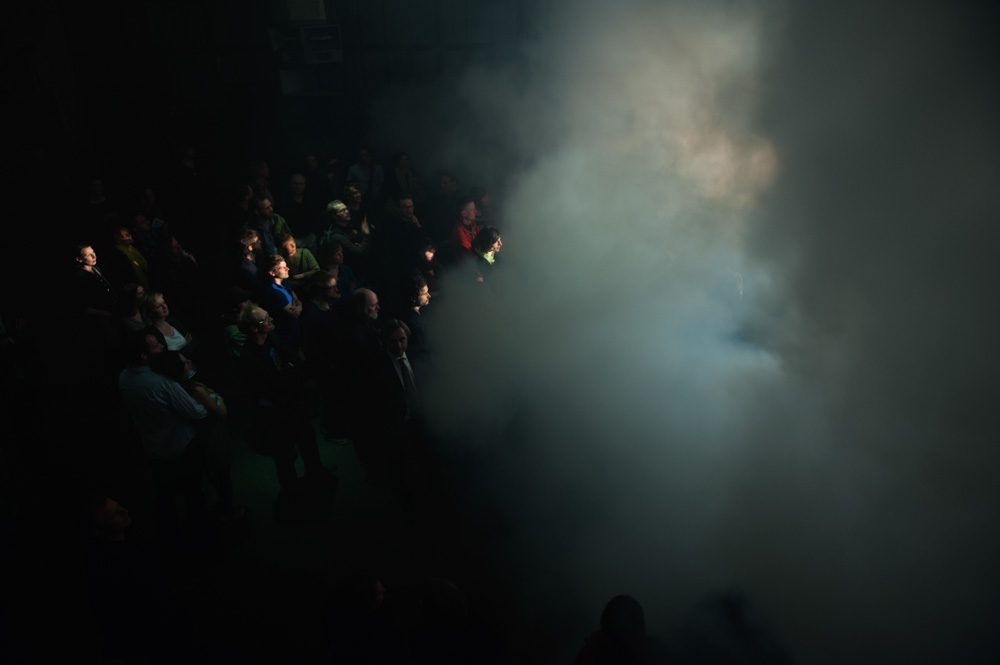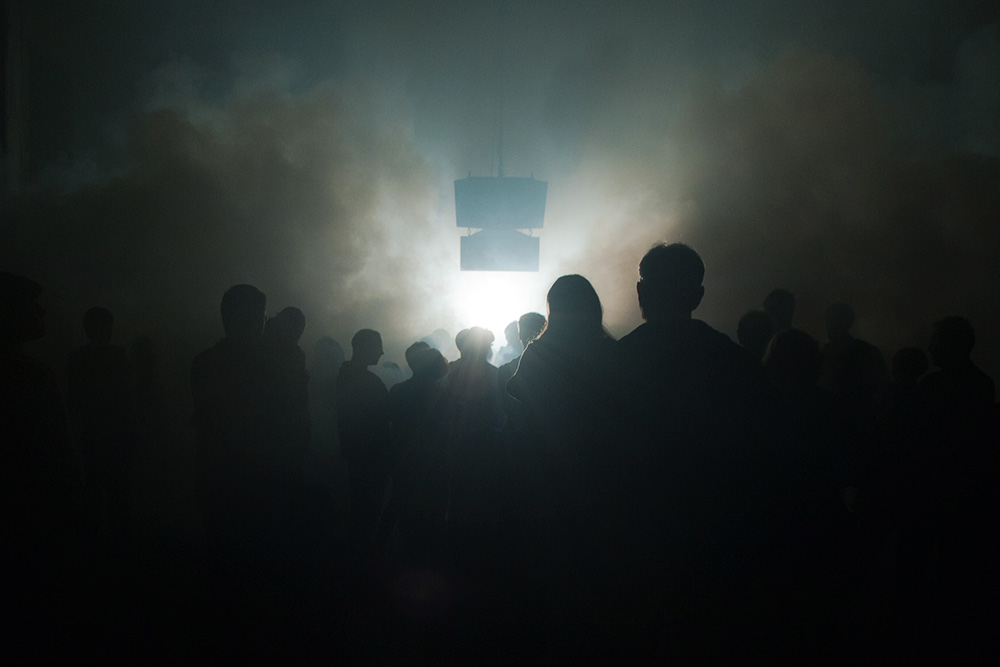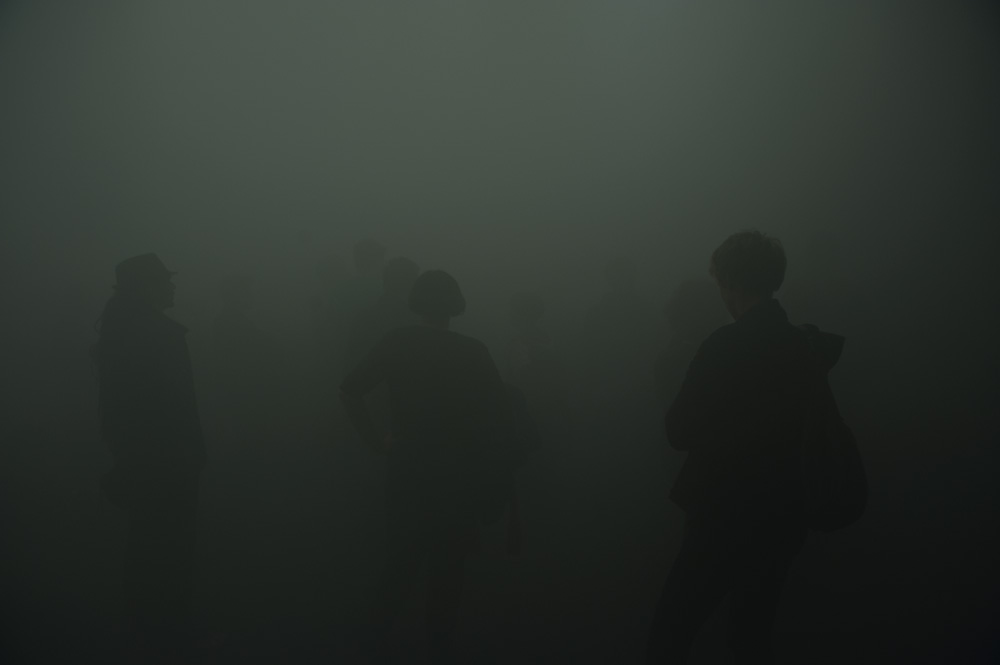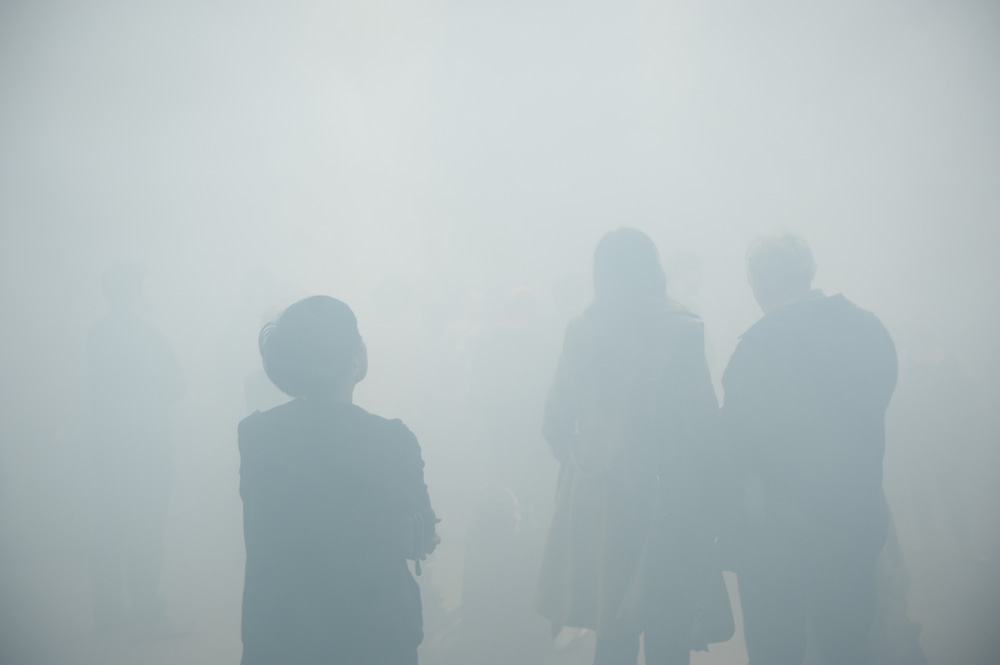|
| CURRENT |
| WORKS |
| PUBLICATIONS |
| BIOGRAPHY |
| CONTACT |
|
Conflux |
Performance Dimension Varies Fog Machines, Blower, Lights, Multichannel Sound System Conflux is part of a series of the works that explicitly tackle the phenomenon of perception and is based on concepts that he developed from his current research on dynamic systems, phenomenology and experimental psychology. Conflux was informed by James J. Gibson’s Theory of ecological perception, which focuses on the perceiver’s interaction with particular properties of their environment. It creates a visually and acoustically artificial environment, which makes for a unique experience in which shifting modes of perception are made tangible – from the perception of the surroundings to the proprioception of the perceivers themselves. The perceivers are active parts of the performative installation. Starting with the homogeneous state, blackout and silence, the environment gradually alters its state to another homogeneous state: whiteout/full spectra of sound through the process of visual and acoustic differentiation. In this process, its homeostatic state creates the visual sensory homeostasis called Ganzfeld, which is homogeneous and unpattern visual sensory stimulation. The differentiation process produces emergent visual and acoustic structures. Because of the materials’ nature, all the performances completely vary depending on the conditions of the sites: temperature of the surroundings, spectators’ body heat, lightings, air conditioning systems, ventilation and architectural materials. Photos by Kai Bienert |
|
|
![]()
Copyrights © 2005 - 2024 Yutaka Makino. All Rights Reserved.



